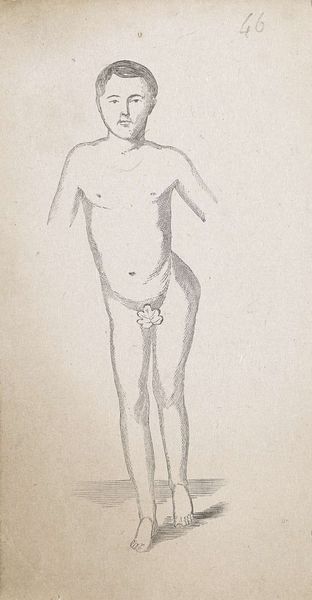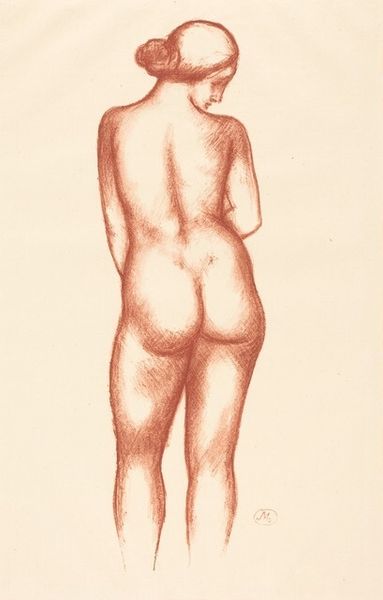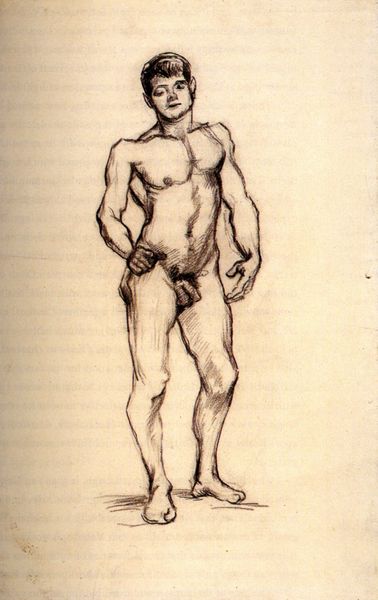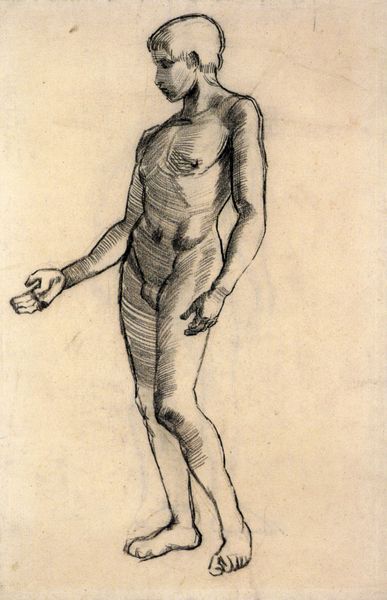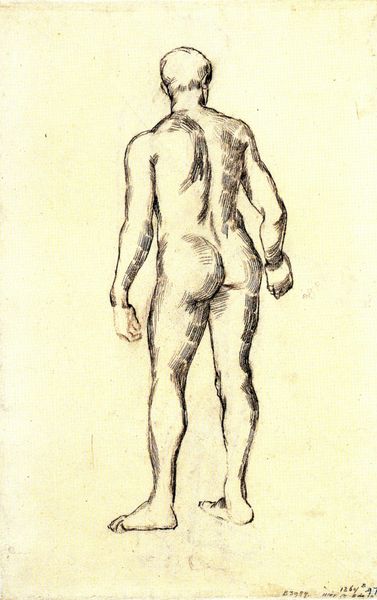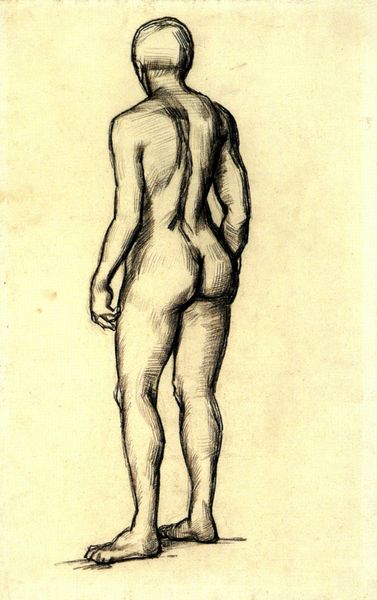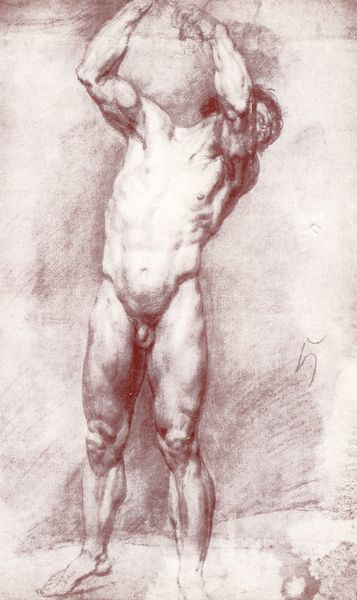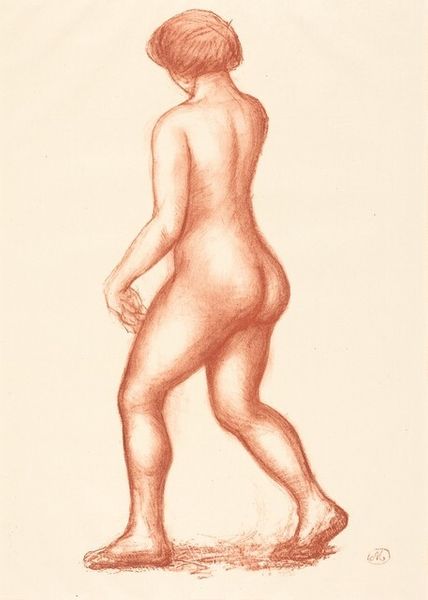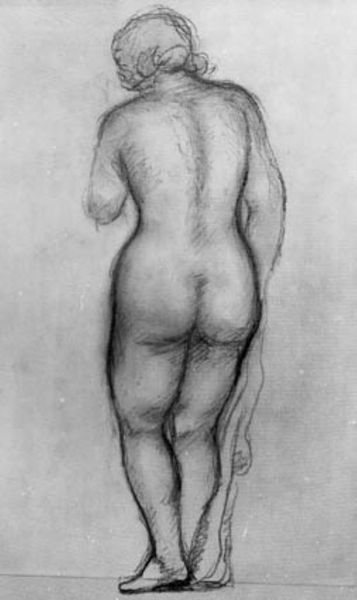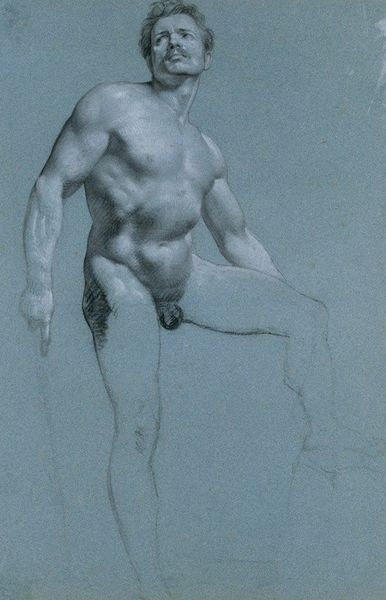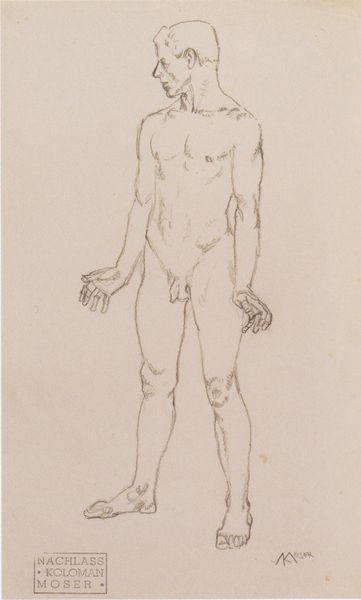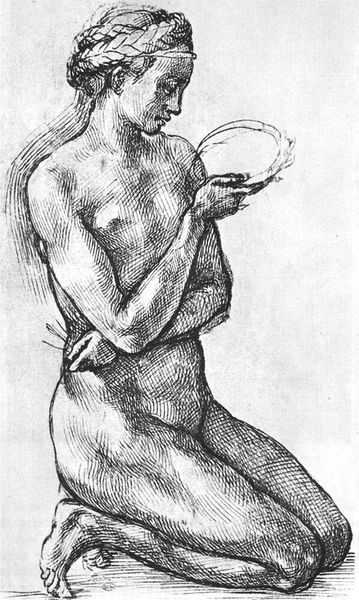
Study of the Human Figure, Anterior View, from 'A Comparative Anatomical Exposition of the Structure of the Human Body with that of a Tiger and a Common Fowl'
0:00
0:00
drawing
#
drawing
#
facial expression drawing
#
portrait image
#
male portrait
#
portrait reference
#
portrait head and shoulder
#
sketch
#
limited contrast and shading
#
human
#
animal drawing portrait
#
portrait drawing
#
facial portrait
#
male-nude
#
digital portrait
Dimensions: 34.6 x 50.8 cm
Copyright: Public domain
Editor: This is "Study of the Human Figure, Anterior View, from 'A Comparative Anatomical Exposition of the Structure of the Human Body with that of a Tiger and a Common Fowl'," a drawing by George Stubbs. It gives the impression of this slightly unsettling blend of scientific accuracy with idealized form, like looking at an antique statue in a lab. How should we be reading this piece? Curator: Unsettling is a fantastic word. Imagine Stubbs, not just as an artist, but almost as a kind of early performance artist, grappling with understanding form through the lens of both scientific objectivity and this very visceral, artistic interpretation. The drawing’s stark simplicity – the subject matter presented so plainly - reminds me of a kind of theatrical spotlight. The composition really throws you off-kilter doesn’t it, with the man centered and yet, devoid of context? Editor: Definitely! And that's a really interesting take on the almost theatrical nature of it. This work reminds me of Da Vinci’s “Vitruvian Man”. What strikes you as particularly insightful, or perhaps surprising, in Stubbs's approach compared to, say, Renaissance anatomical studies? Curator: Well, Da Vinci had this real sense of the ideal, an aspiration towards perfection that fits squarely into Renaissance Humanism, and yes that too in Stubbs. However, where Da Vinci sought universality through idealized proportions, Stubbs… He felt much more pragmatic in his portrayal. Notice, if you will, how Stubbs highlights specific muscles, how real the textures appear, which adds depth through shading and texture. Does he somehow celebrate both the individual and anatomy? He pushes at our need to classify everything in the universe, to dissect what truly cannot be fully taken apart. Editor: So, less about universal ideals and more about the specific and…dare I say, the beauty in the imperfection. Fascinating. I hadn't considered the element of almost challenging the very concept of categorization. Curator: It’s precisely this ambiguity which allows Stubbs’s drawing to breathe beyond a purely scientific endeavor. And maybe invites you, personally, to contemplate our own embodied existence, and to ask if this portrait challenges or re-affirms conventional understanding of self and others. Editor: Absolutely. This conversation has reshaped my understanding considerably; now I'm considering his study as almost challenging how we perceive reality.
Comments
No comments
Be the first to comment and join the conversation on the ultimate creative platform.
